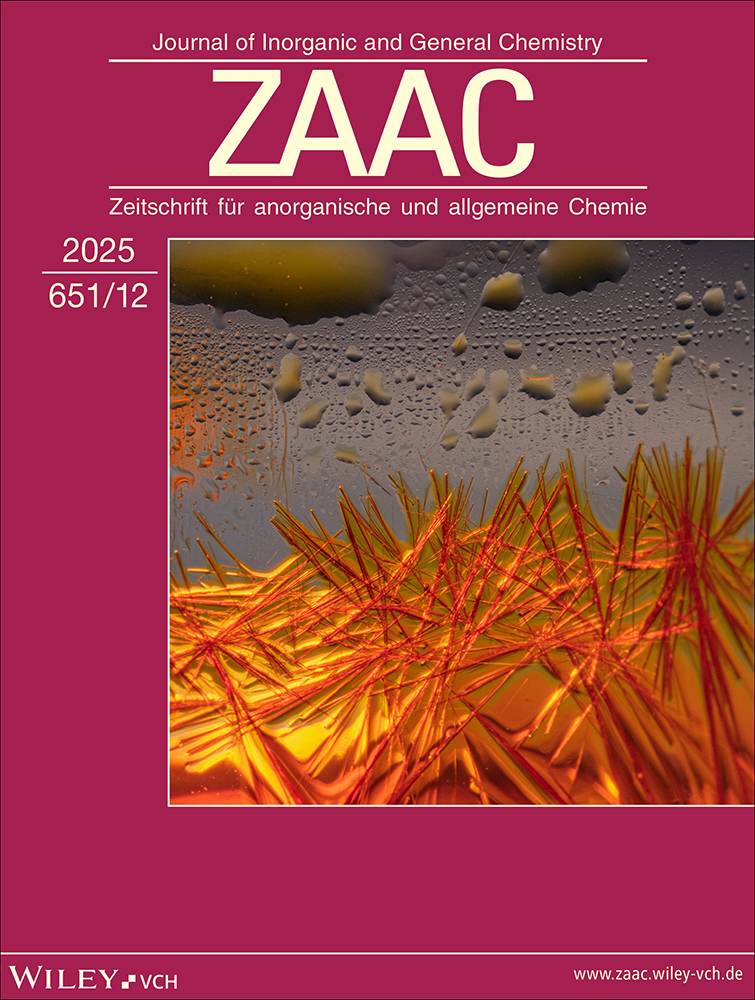Thermisches Verhalten von Caesiumchloroferraten(III) und Caesiumchloroferrat(III)-Hydraten Zum Phasendiagramm des Systems CsClFeCl3
Abstract
deDas thermische Verhalten von CsFeCl4, Cs2Fe(H2O)Cl5 und Cs3FeCl6 · H2O wurde mittels Simultanthermoanalyse bis 500°C, Röntgenbeugung und Raman-Spektroskopie untersucht. Wasserfreies Cs3FeCl6 ist bis 280°C metastabil; demgegenüber kann wasserfreies Cs2FeCl5 nicht erhalten werden. Die bei der Zersetzung von Cs3Fe2Cl9 in einer Festphasenreaktion gebildeten Verbindungen wurden als CsFeCl4 und CsCl identifiziert. Die Zersetzung ist reversibel. Aufgrund der experimentellen Ergebnisse wird das korrigierte Phasendiagramm des Systems CsClFeCl3 vorgestellt.
Abstract
enThermal Behaviour of Cesium Chloroferrates(III) and Cesium Chloroferrate(III) Hydrates. On the Phase Diagram of the CsClFeCl3 System
The thermal behaviour of CsFeCl4, Cs2Fe(H2O)Cl5, and Cs3FeCl6 · H2O has been studied by simultaneous thermal analysis up to 500°C, x-ray diffraction, and Raman spectroscopy. Anhydrous Cs3FeCl6 is metastable up to 280°C. Anhydrous Cs2FeCl5 does not exist. The decomposition of Cs3Fe2Cl9 at 270°C yields CsCl and CsFeCl4. This solid phase reaction is reversible. The corrected phase diagram of the system CsClFeCl3 is presented basing on experimental results.




